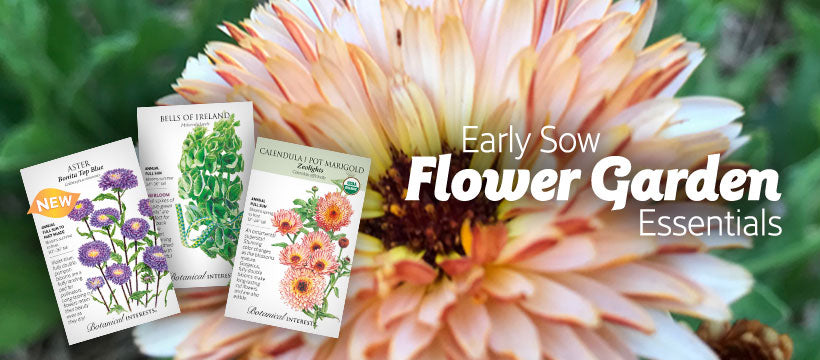The genus name, Ipomoea, comes from the Greek, ips, meaning vine or tendril, and homolos, meaning similar, roughly translating to "climbs like a vine". Morning Glories have been cultivated since the 9th century. Asian cultures were the first to recognize the morning glory for its medicinal purposes, while native tribes often used them in religious rituals. Along with its use by early practitioners of folk medicine, the morning glory has been used symbolically since the Victorian Era, often depicted in novels and screenplays. The infamous 'Heavenly Blue' morning glory blossom was said to have many meanings, including love, vanity, life, and death. Others say its short-lasting blooms represent a human's daily routine: rising in the morning and sleeping in the evening.
Many home gardeners around the country enjoy morning glories for their long, luscious foliage and climbing nature—perfect for creating an attractive arbor or fence! These large, stunning blooms and heart-shaped leaves can be truly breathtaking! If you're wondering how to grow morning glories from seed, look no further!
Parts of the morning glory are toxic if ingested, including the seeds.
GENERAL SOWING
When to Sow Outside: RECOMMENDED. 1 to 2 weeks after your average last frost date. Plants started too early outside will end up less vigorous than plants started when warmer.
When to Start Inside: 4 to 6 weeks before transplanting outside. Roots are sensitive to transplant disturbance; sow into a biodegradable pot that can be directly planted into the ground to avoid disturbing roots.
Special Germination Instructions: Seeds with hard coats, like morning glories, can benefit from scarification, a means of breaking through the hard outer covering to allow moisture to penetrate. There are a few ways to accomplish this: either nick the seeds with sandpaper or a nail clipper, or soak them in water for 12 to 24 hours prior to sowing.
INDOOR SOWING
Using a lightweight seed starting mix/medium (sterile, and lighter than potting mix), and sow seeds ½" deep. Sow 3 seeds per pot, thinning the strongest plants once leaves appear (clip extra plants at the soil level using sterilized scissors). The strongest plant may not be the tallest; look for thick, strong stems and deep color. By thinning early, you minimize the negative impact of crowding, like stretching for light.

Containers
Recommended: Biodegradable pot that can be directly planted into the ground.
Containers should be clean, sanitized, and have drainage holes. If you choose to sow in cell packs, you may need to up-pot seedlings into larger containers before transplanting outside to give them more space to grow and avoid becoming root-bound.
Transplanting
After hardening off, transplant seedlings 6"–12" apart.
OUTDOOR SOWING
Sowing preparation
Morning glories are frost-sensitive; wait until the risk of frost is over. Choose an area that receives full sun and has well-draining soil with average fertility to encourage great foliage growth and blooms. You may also choose a site that has a fence, trellis, or arbor for vines to climb.
Thinning
When seedlings are 2" tall, thin 1 to every 6"–12".
Water
Keep morning glories well-watered; do not allow them to dry out. Apply mulch to retain water and suppress weeds.
Fertilization
Fertilizer is not usually necessary; too much nitrogen will promote more foliage and fewer flowers. If needed, add a liquid, phosphorous-rich fertilizer after the summer solstice to assist with flower production.
Exposure
Full sun.
Special Care
Deadhead (remove spent flowers) to encourage more blooms and to avoid reseeding.
BLOOM SEASON AND DURATION
Each flower lasts but one day, opening in the morning, and closing by late afternoon, depending on exposure. Morning glories begin blooming in early summer and bloom prolifically until frost.
Plants receive signals from nature, usually temperature or light, indicating it is time to start flowering. Plants that flower based on light can be classified as either short-day, long-day, or day-neutral. While the term seems to indicate day length, it is actually the length of darkness that is critical. Some plants will stop flowering if the required amount of darkness is interrupted by light. This physiological reaction of plants to the length of day or night is called photoperiodism. Morning glory is a short-day plant, meaning it will start flowering only when the day length begins to shorten, and the amount of nighttime darkness lengthens. This occurs naturally after the summer solstice around June 21st.
COMMON PESTS AND DISEASES
Aphids
Symptoms: Yellow leaves and distorted flowers.
Control: Knock off aphids with water, apply insecticidal soap or neem oil.
Prevention: Scout for pests regularly, use slow-release fertilizers, avoid excess nitrogen, encourage aphid predators like ladybugs, spiders, and lacewings.
Fusarium wilt
Symptoms: Wilted plants, yellow leaves, poor flowering.
Control: Remove infected leaves and plant debris regularly.
Prevention: Disinfect tools, avoid excess nitrogen, raise pH to 7.0


